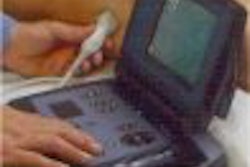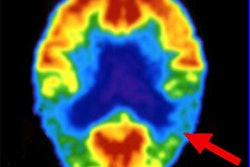(Ultrasound Review) This retrospective study, published recently in the Journal of Ultrasound in Medicine, evaluates the use of ultrasound in musculoskeletal examinations incorporating interventional procedures.
One hundred and sixty-five patients underwent 195 procedures over an 18-month period at the Radiology and Nuclear Medicine Department, Hospital for Special Surgery, New York City. Fluoroscopy and CT have more commonly been used for musculoskeletal interventional procedures, but with resolution improvements, mobility, and its real-time nature, the use of ultrasound is increasing. Other advantages of ultrasound include its nonionizing nature, making it appropriate for children and pregnant women.
Direct, real-time visualization of the needle enables more accurate placement of medication into the tendon sheath rather than into the tendon itself. Injection into the tendon may lead to tendon degeneration and rupture. Limitations for CT include a lack of real-time imaging and interference by needle artifact that might obscure small regions of interest such as the tendon sheath.
"Ultrasonographically guided interventions included therapeutic injections into tendon sheaths, Morton’s neuromas, plantar fascia, wrist ganglia, and tarsal tunnel cysts; peritendinous hamstring injections; and synovial cyst and muscle biopsies," the authors said.
Procedures were performed using either a 5-13-MHz linear-array probe or a 5-7-MHz curved-array transducer, depending on the depth of the target and the surface anatomy. The authors advocate the use of a free-hand technique and encourage insertion of the needle perpendicular to the ultrasound beam to create a specular reflector that results in strong needle echogenicity and improved visibility.
The authors found power Doppler to be useful in identifying increased blood flow that was suggestive of inflammation or infection, and this finding influenced their decision about how, when, or whether to intervene.
They concluded, "Excluding large-joint aspirations and injections, we found that 180 of the procedures were more readily performed using ultrasonography than any other imaging modality. The ability to document exact needle placement in real time confirms accurate placement of therapeutic injections, fluid aspiration, and soft-tissue biopsies."
"Use of ultrasonographic guidance in interventional musculoskeletal procedures: a review from a single institution"
Carolyn M Sofka et al
Dept of Radiology and Nuclear Medicine, the Hospital for Special Surgery, 535 East 70th Street, New York, NY 10021-4828, USA
J Ultrasound Med (January) 2001; 20:21–26
By Ultrasound Review
April 13, 2001
Click here to post your comments about this story. Please include the headline of the article in your message.
Copyright © 2001 AuntMinnie.com



















